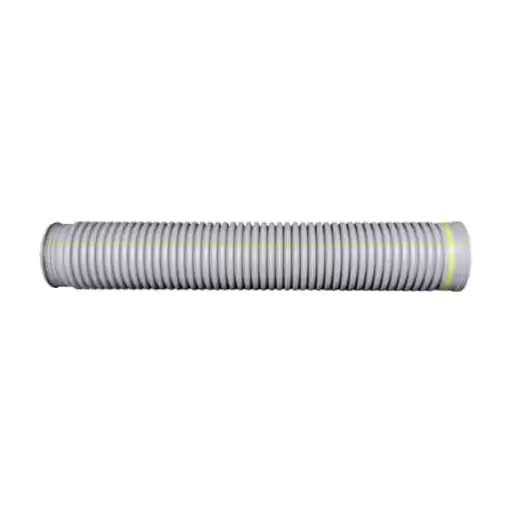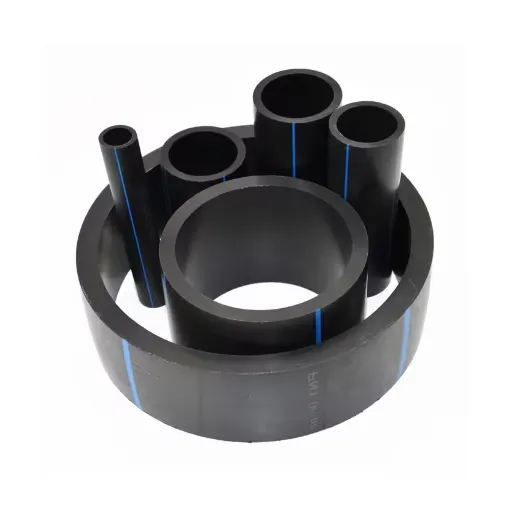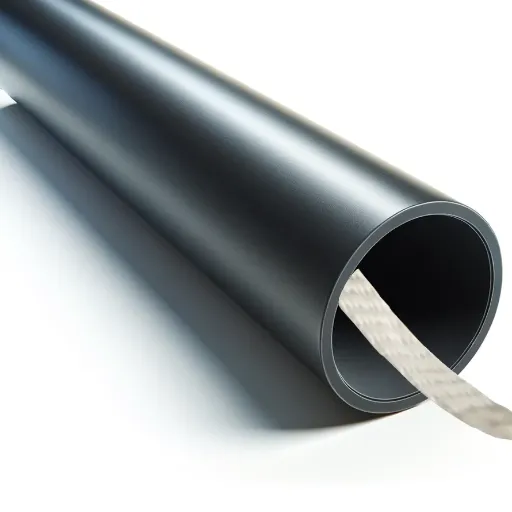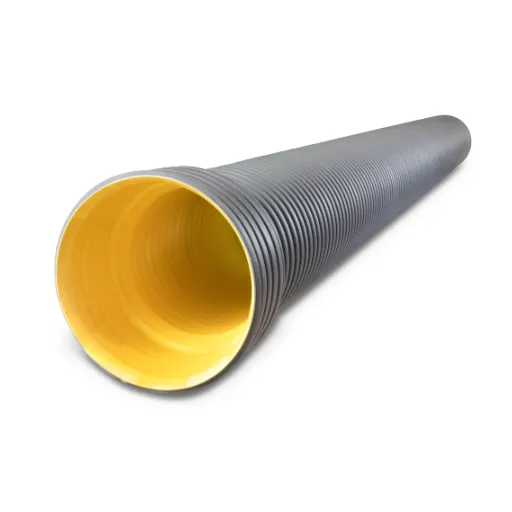When it comes to selecting the right piping solution for your project, understanding the nuances between different materials is critical. HP (High-Performance) and HDPE (High-Density Polyethylene) pipes are two popular options, each with distinct characteristics, advantages, and limitations. Whether you’re managing a large-scale infrastructure development, a municipal utility installation, or a commercial project, your choice of pipe can significantly impact longevity, cost-efficiency, and overall performance. This article provides a comprehensive comparison of HP and HDPE pipes, enabling you to make an informed decision that aligns with your project’s specific requirements.
Key Differences Between HP and HDPE Pipes
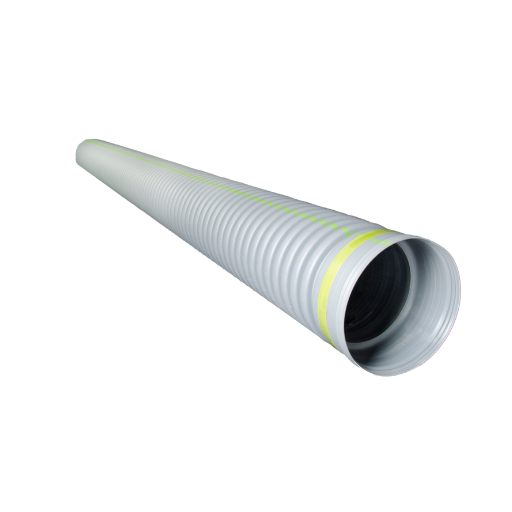
Physical Properties
HP or High-Performance pipes are manufactured to impart them greater structural integrity and durability. They use polymer blends of the most advanced types withstanding high loads, also mechanical stresses. High tensile strength and toughness properties help the pipes to serve high-functioning applications such as heavy industrial systems and environments requiring very long service life.
HDPE (High-Density Polyethylene) pipes are known for their flexibility and corrosion resistance. Being light, they prove to be easy to handle and install, especially when the terrain is difficult. Chemicals around them also have little effect on HDPE pipes, hence guaranteeing long-term performance in hostile environments where chemicals may be discharged in industrial wastewater or under saline conditions.
Hence, rigidity and use encircle the major difference. HP pipes find themselves in a high-pressure situation where strength and rigidity matter the most; meanwhile, HDPE does best where flexibility, chemical resistance, and cost-friendliness take precedence. The two materials, however, are very reliable; it is then a matter of what your particular application and environment require.
Performance Characteristics
When considering the performance, there are a number of considerations determining which pipe will be capable of specific applications.
- Strength and Durability: HP pipes are designed to function under high pressures, possessing extraordinary strength and rigidity, and being resistant to structural deformation when subjected to heavy loads. Due to these properties, it is the pipes’ high-pressure hydraulic systems and industrial processes where their applications find a strong bearing. On the other hand, HDPE pipes are more flexible yet provide considerable impact resistance, allowing for satisfactory performance under dynamic conditions such as earth movements or seismic activities without the possibility of crack propagation.
- Chemical and Environmental Resistance: HDPE pipes resist vast amounts of chemicals, making them excellent for corrosive environments or situations involving moisture. Their inert property offers: longevity in wastewater systems, chemical transport, and salty or contaminated soils. These are higher HP pipes that usually provide incomparable chemical resistance to HDPE pipes and are sometimes less suitable for corrosive applications.
- Cost and Installation Efficiency: HDPE pipes tend to be highly cost-efficient and easy to install. Thin and flexible, they minimize transportation and labor costs. Fusion welding techniques assure greater reliability of joint systems made from HDPE. On the other hand, HP pipes entail a more complex installation and are potentially more costly upfront, but they promise a longer service life and a higher level of performance in extreme pressure environments, hence balancing the initial investment placed on long-term use.
At the end of the day, selection between HP and HDPE pipes must be oriented by actual operational demands, environmental needs, and lifespan requirements of the given project.
Applications in Drainage Systems
Drainage systems hold crucial importance for managing water flow, preventing flooding, and keeping infrastructure intact. Both HP and HDPE pipes are widely used for drainage applications because they offer great durability, resistance to corrosion, and adaptability under varying environmental conditions. Following is a detailed list of common applications found under drainage systems:
- Stormwater Management: HP and HDPE pipes are typically used in stormwater drainage to quickly drain rainwater and alleviate flooding concerns in urban and rural areas. Their ability to handle high-velocity flows and resist abrasion makes them suitable for these purposes. For example, HDPE pipes have been tested to last as long as 100 years under non-aggressive environments when subjected to stormwater loads.
- Sanitary Sewer Systems: Conveying wastewater from residential, commercial, and industrial establishments through these pipes constitutes one of their functions. HP pipes prove extremely helpful in this respect by accommodating extreme pressures when in deep installations; thus, there are fewer risks of leaks or structural failure for decades of service.
- Subsurface Drainage: HDPE pipes are widely used in agriculture to drain water from the soil and improve crop yields. Their flexibility and light weight make the installation very easy over large tracts of land; studies have shown significant enhancement in the efficiency of land drainage with the use of HDPE pipes.
- Road and Highway Drainage: To thus prevent water from pooling and consequent structural damage to the roads, roadside drainage systems make use of both HP and HDPE pipe types. Their resistance to high compressive stresses arising from heavy traffic ensures that they remain functional even under frequent stress for long periods.
- Industrial Water Conveyance: Industrial establishments require a dependable drainage system, which safely disposes of industrial runoff and process water. On account of their relatively higher temperature and chemical resistance, HP pipes tend to be the preferred choice in such industries as oil refining and chemical manufacturing.
These discussed applications highlight the versatility and reliability of HP and HDPE pipes when dealing with drainage issues between different sectors.
Advantages and Disadvantages
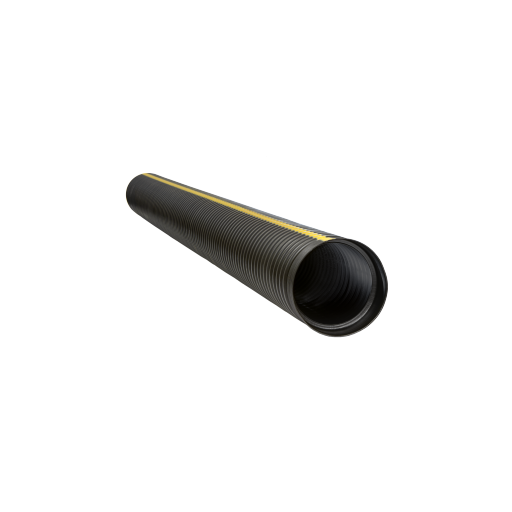
Benefits of HP Pipe
- High-Temperature Resistance: The HP pipes are designed against elevated temperatures, generally able to withstand up to 140°F (60 °C) in continuous operation, while the short atmosphere may be worse. It thus suits industries practicing thermal processes like chemical manufacture and power generation.
- Exceptional Chemical Resistance: HP pipes are found to resist aggressive chemicals, including acids, alkalis, and solvents. They have, for example, been proven to withstand the structural deterioration of HP pipes in sulfuric acid solutions up to 50%, thereby enhancing their application in corrosive environments.
- Strength and Longevity: HP pipes are made from an advanced polymer with remarkable abrasion-resistance properties and mechanical strength, with a life expectancy of 50 years under normal operation. This further diminishes replacement and operating costs.
- Lightweight and Easy to Install: HP pipes are much lighter in weight in comparison to conventional materials such as steel or concrete, which results in easier handling, transportation, and installation. They are relatively easy to work with, and installation labor costs can often be cut down by 20-30%, depending on the scale of the project.
- Low Maintenance Requirement: HP pipes require little maintenance because of their corrosion resistance and strong construction. Field data on their performance show that their maintenance levels are decreased by up to 60% when compared to a metal piping system, thus promoting operational efficiency and reduction in maintenance expenditure.
Benefits of HDPE Pipe
- Exceptional Corrosion Resistance: HDPE pipes are highly resistant to chemical corrosion and environmental degradation. Unlike metal pipes, blue HDPE pipes do not rust and wither, or corrode when exposed to varied substances, such as saltwater, acidic solutions, and industrial chemicals. Studies prove that HDPE pipes can maintain structural integrity for over 50 years in highly corrosive environments.
- Great Flexibility and Great Impact Resistance: These pipes are flexible, storing the energy from surges or impacts and releasing it without cracking or breaking. Such a characteristic helps mainly in zones where earthquakes or ground movements may occur. Research works have shown that HDPE pipelines fail 40 percent less in these conditions than rigid pipe materials.
- Higher Life Span and Durability: HDPE pipes are considered longer lasting than conventional piping systems. From both inside laboratory testing and inspection of existing HDPE systems, it is adequate to say that its expected life under normal conditions is from 50 to 100 years. This is, therefore, a better option for infrastructure projects as a long-term investment.
- Cheap Installation: Since HDPE pipes are light in nature, cheap for transportation, and easier to install, decrease project cost. On the other hand, they are instrumental in minimizing excavation and labor prices since they support trenchless installation methods like horizontal directional drilling. According to case studies from the field, this installation method can save up to 35% of cost in comparison with the conventional method.
- Leak-Proof Joints: An HDPE pipe uses heat fusion to produce permanent joints whose strength equals that of the pipe itself, rendering them incapable of leaking. This ensures a more reliable and fluid-tight system, particularly for water and gas distribution applications. Data from various investigations proves that leakage rates in fusion-jointed HDPE systems are as much as 95 percent lower than those in traditional pipe systems joined by mechanical methods.
Limitations of Each Material
- HDPE (High-Density Polyethylene) Pipes: The pipe system preserves the flexibility and durability capacity of HDPE pipes; however, there are some limitations besides those mentioned above. One such important drawback is the thermal expansion and contraction of the pipes when temperature changes occur. Given this, such properties of a pipe must be incorporated into the design, depending on-site installation, so as not to undergo deformation or end up with stress fractures. Also noteworthy is that HDPE pipes would have a lower pressure rating than either PVC or metal pipes, depending on wall thickness and diameter. Perhaps, since HDPE is an extrusion of a thermoplastic, special standards must apply in the manufacturing of HDPE IPS pipes due to their performance in modern-day high-pressure applications.
- PVC (Polyvinyl Chloride) Pipes: PVC pipes are good options as a lightweight and cost-saving choice for most applications but with some limitations over extreme temperatures. It slows down or almost stops developing in brittleness when the temperature goes below 0°C, thus increasing the chances of cracking or failure. On the other hand, prolonged exposure to temperatures of about 140°F (60°C) or above tends to weaken PVC so that its useful life is shortened. PVC is, however, resistant to many chemicals, but solvents and some other hydrocarbons can degrade the pipe. It is less flexible than HDPE and thus may have limited applications in dynamic environments.
- Steel Pipes: The steel pipe is strong and can withstand great pressures, but is very susceptible to corrosion, especially in an environment of high moisture or salinity. The pipes may have to be coated or galvanized, or so infrequently, to add to the cost and upkeep. The considerable weight of steel pipes is due to which transportation becomes cumbersome and expensive. Besides, steel pipe systems mostly require mechanical joints or welding, both of which are sources of potential failure if not done properly.
- Copper Pipes: While copper pipes are exceptionally durable and corrosion-resistant by nature, nonetheless, procurement and installation tend to be more expensive as compared to those for some other types of pipes such as PVC and HDPE. Copper turns susceptible to corrosion in waters that are highly acidic or alkaline, which could cause pinhole leaks over time. The other big thing is that copper manufacturing and extraction processes have a higher environmental footprint and, thus less sustainable than alternatives like HDPE. Copper is also practically rigid, complicating installations where a measure of flexibility is required.
These limitations underscore the importance of material selection based on application-specific requirements, environmental conditions, and long-term cost-benefit analyses. By understanding the pros and cons of each, engineers and contractors can better design systems that are more robust, efficient, and sustainable to meet the needs of the project at hand.
Cost Comparison
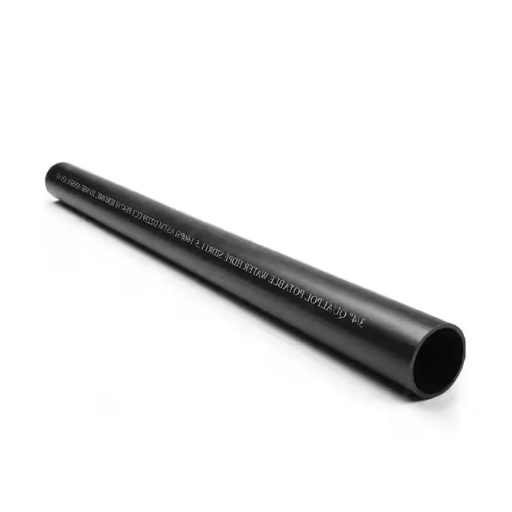
Initial Costs of HP and HDPE Pipes
Depending on material composition, production, and usage, pipe units for HP and HDPE pipes differ in their initial prices. Usually produced from high composite materials, these HP pipes will possess the highest procurement price because of their high structural capacity and performance characteristics in demanding situations. For instance, with their supreme resistance to pressure and extremely high temperatures, they become suitable in several special cases where their pricier installation costs are justified.
HDPE pipes, on the other hand, are considered cheaper for numerous other uses. The relative cheapness of HDPE is attributable to the simple production process and the general-purpose nature of the polymer. HDPE pipes, being usually cheaper as far as raw material and installation costs are concerned, have become the pipe of choice in municipal systems, agriculture, and other non-critical applications where there are no extreme factors of stress.
A thorough cost analysis should take into account all direct costs associated with materials, transportation, labor for installation, and so on, as well as any additional expenses for either type of pipe associated with special equipment or materials. For example, reinforced fittings may be required for HP pipes, or delicate handling may be needed during installation that could further increase their upfront installation costs. HDPE pipes, conversely, are very lightweight and easy to handle, thereby possibly reducing the cost of labor and equipment. A thorough examination of short-term expenditures Dshort and long-term operational requirements Dlong will be necessary to determine which would be the most cost-efficient for any project context.
Long-term Cost Considerations
In this regard, when we speak of long-term cost considerations, we might discuss the durability of materials, maintenance requirements, energy efficiency, and requirements related to system maintenance or expansion. Materials such as HDPE are highly corrosion-resistant and may last for 50 to 100 years under good conditions, thus greatly limiting the frequent need for replacements or repairs. Other materials, like certain HP pipes, under adverse environmental conditions may degrade faster, thus increasing long-term maintenance costs.
Energy costs for running the system could be varied as well. For example, HDPE pipes would generally have a smoother interior surface than some others, reducing friction losses and thus lessening the energy required to pump fluids from a longer distance. These features would, over decades, be reimbursed in terms of lower energy bills compared to materials with rougher internal surfaces or higher friction coefficients. Other than that, the compatibility with future infrastructure developments like smart monitoring systems or pipeline capacity scaling might have an impact on some other factor ,material selection for lifecycle costing.
A thorough analysis of these long-term factors gives way to the integration of a pool of empirical data and predictive modeling, thus ensuring that the decision taken meets both economic criteria and objectives involved in the sustainable development of a project.
Budgeting for Pipe Projects
The effective budgeting of pipe projects requires a holistic consideration of all aspects of the costs that might arise, including materials, labor, equipment, and contingency budgets. The materials used, whether PVC, HDPE, ductile iron, or stainless steel, are quite crucial to the situation, with costs varying significantly based on suitability for durability, diameter, and environment. Labor considerations can include the mixture of skilled and unskilled labor, with some installations requiring certifications and licenses that may override local standards due to developing infrastructure importance, say with drinking or chemical facilities.
Likewise, capital expenditures and schedules are impacted by equipment and construction methodologies, including trenchless technologies such as horizontal directional drilling. Contingency reserves opposing unforeseen challenges such as geological problems, supply chain issues, or regulatory modifications must be at least 10-20% of the total project cost.
Thereafter, integrating BIM and GIS would expedite cost estimation through early detection of design errors, thereby enabling the apt allotment of bottlenecked resources. Likewise, project managers need to keep track of price fluctuations of raw materials in the market to make sure budgets are carved out realistically and able to evolve with changing requirements throughout the stages of the project.
Installation Processes
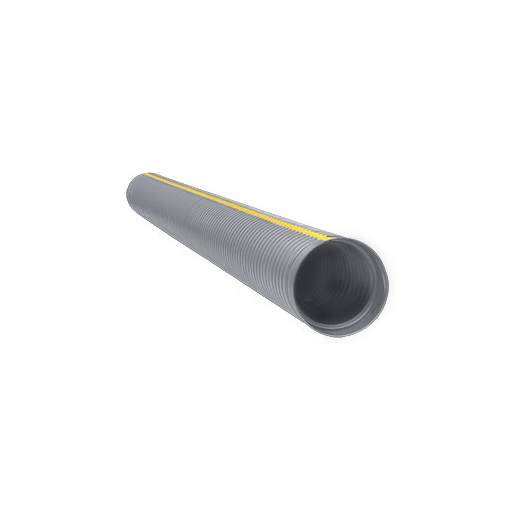
Installation of HP Pipes
Installing Hard-to-Satisfy High-Performance pipes is a highly exacting task that must be planned very carefully and executed according to industry standards to guarantee its function, durability, and safety. A detailed site survey would necessarily be conducted considering ground conditions, obstructions, and in line with project specifications. All materials should be checked for any defects, and pipe specifications, along with various manufacturer recommendations, ought to be reviewed to prevent violations.
For installation commencement, an appropriate trenching method must be applied. Trenches should be dug to a present depth and width to guarantee the space needed for handling and joint assembly. The bedding material, usually sand or gravel, should be carefully spread on the base of the trench to give ample and uniform support to the pipe. The pipes are laid in sequential order as given in the project layout, with the joining of the pipe sections using approved coupling methods, including fusion weld or mechanical joint, or gasket connection, depending on the type of pipe.
Proper precision must be observed while aligning the pipes so as to keep up proper rates of flow and minimize the stresses produced on the joints. After the alignment, pressure tests are carried out on the pipes to check the integrity of the joints and to satisfy the reliability criteria of the system. Backfilling is then done in layers by using carefully well-engineered fill to prevent the displacement or deformation of the pipe. One of the most important procedures during installation is to keep records of installation parameters as well as test results for reference during future maintenance operations and to prove compliance. Following these detailed procedural guidelines and with support from state-of-the-art analysis tools, the installation can be executed to unfaltering efficiency and assured performance.
Installation of HDPE Pipes
When High-Density Polyethylene (HDPE) pipes are installed correctly, attention must be divided between strict technical specifications and varying site conditions for maintaining durability and functionality over a very long time. The trench preparation stage is, most importantly, carried with its dimensions and slope working to control overburden stress and thermal expansion of the pipe in a constrained environment. The bedding shall consist of granular material free of sharp-edged particles to be able to support the pipe evenly and prevent the area load from occurring.
When joining HDPE pipes, it is generally fusion techniques that are used: butt fusion or electrofusion, generating strong, leakproof joints that resist high pressure and corrosion. For butt fusion to be successful, the various (i.e., alignment, temperature, pressure, and cooling time) have to be followed to the letter in conformance with the manufacturer’s instructions; any single deviation leads to joint failure or inferior joint performance. Electrofusion makes use of electrical couplers fitted before application and heats them under controlled conditions to melt and weld the surfaces together.
Also, backfilling should be directly according to the corresponding engineering requirements, thus preventing any displacements or structural failures. The first backfill layers shall be compacted uniformly around the pipe, thereby providing a firm lateral support, whilst avoiding over-compactions that can detrimentally affect the pipe material. Finally, a hydrostatic pressure test should follow pipe installation, whereby the pressure is incrementally regulated to spot leaks or failures in the system.
Up-to-date innovations in materials and installation methods also improve efficiency and longevity. For example, digital tools are available to engineers for predictive modeling and fatigue analysis; engineers use these technologies to preemptively tackle stresses from temperature fluctuations and movements of the soil. If one follows the advanced practices and technologies listed above, then the installation of HDPE pipes in irrigation, industrial pipelines, or municipal utilities can be ensured as well as optimized for all conditions.
Challenges and Requirements
Putting HDPE pipes in place and maintaining them presents certain issues and requirements that have to be considered during planning and execution. A major challenge in the installation of HDPE pipes involves proper allowance for thermal expansion and contraction because of the high thermal coefficient of these pipes. If these movements are not properly taken into account, deformation or stress may be exerted on the system. More challenges include dealing with abrasion resistance when used in highly frictional environments and chemical compatibility when used in industrial environments.
Proper joining methods must be implemented to make sure the joints do not leak and are durable over time. Such methods need to follow very closely the manufacturer’s instructions; for example, any deviation from the recommended temperature and pressure during fusion will compromise the assemblage. Besides this, trench preparation is equally important, where any improper grading or incorrect bedding material may lead to jeopardizing the integrity of the structure and exposing the pipes to external stress.
Then, there are also requirements for continuous monitoring. Advanced and proper sensors and monitoring systems make it possible to monitor flow rate, pressure, and leak detection in real-time, thus assisting the operators in extending the HDPE network’s service life. By attending to these challenges and meeting all required standards, HDPE systems can be placed at their highest degree of performance, safety, and industrial codes.
Durability and Environmental Impact
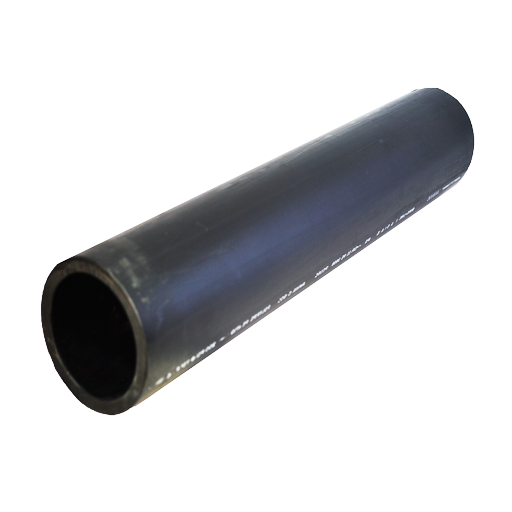
Resistance to Extreme Weather Conditions
High-density polyethylene piping systems can be installed to resist a whole gamut of loads imposed by extreme weather conditions, and trust can be placed in their performance even under harsh environmental conditions. The HDPE material possesses great impact resistance and flexibility; thus, it maintains its properties in conditions where the temperature dips below zero degrees and is used for cold climate installations. The high-thermal resistance property enables HDPE piping to perform engineering applications in atmospheres where the pipes are exposed to heat for a prolonged period.
In material science, recent advances have increased the resistance of HDPE against UV degradation, which is an important consideration in regions of high sunlight. Prolonged ultraviolet radiation can alter the properties of many materials for the worse, but the synergistic action of UV stabilizers in specially formulated grades of HDPE extends the life of the piping significantly. It has been found from research studies that UV-stabilized HDPE retains about 85-90 percent of its mechanical properties even after more than 20 years of final exposure to UV.
In contrast, environmental factors such as wild temperature variations or corrosive chemicals widely found in certain soil types are practically ineffective in degrading HDPE. This makes HDPE an ideal solution for applications that span from arid deserts to sub-zero permafrost terrains. Withstanding weather-induced stress ensures HDPE is durable to ensure operational reliability and also reduces maintenance and life cycle costs.
Long-term Sustainability of HP and HDPE
High-performance polymers and high-density polyethylene stand out as agents of sustainable engineering because of their endurance, recyclability, and low carbon footprints as opposed to traditional materials. To cite one instance, HDPE is recyclable by nature: reprocessing recycled HDPE would require far lesser amounts of energy when compared to manufacturing virgin polyethylene. Studies have indicated that the recycled HDPE hardly loses its original strength and chemical resistance and is suitable for application across industries, from packaging to construction. Further, chemical recycling routes such as pyrolysis and solvolysis are being continually improved to achieve even higher recovery rates and purity of outputs.
On the environmental side, HDPE, therefore, stands for the conservation of resources and reduction in waste generation. It supports being managed by a variety of recycling schemes, most of which are governed as closed-loop recycling, thereby further reducing the chances of insult to the environment by landfill. High-performance polymers are also being engineered to an increasing extent to deliver enhanced lifecycle performance with respect to high-temperature stability, chemical resistance, and durability.
High-performance polymers exhibit diverse functionalities for demanding applications while ensuring a low ecological impact. Because such materials tend to have very long service lives in harsh environments, they are seldom replaced; hence, less environmental burden accumulates over time. Along with that, HPs prepared from sustainable feedstocks, such as bio-based monomers, are being generated by novel routes, thereby augmenting environmental friendliness without compromising mechanical properties.
The applications of HDPE and HP for long-term sustainability also include renewable energy systems. For example, HDPE is used to pipe geothermal energy because it can withstand high stress and adverse conditions. On the other hand, HP materials are needed for manufacturing lightweight and durable components for wind turbine blades and photovoltaic panels, thereby aiding in energy decarbonization.
By striving for both performance and environmental responsibility, HP and HDPE represent one of the most important opportunities for a greener industrial landscape. In this regard, ongoing research, along with policy support, would remain essential in not only expanding the applications of these materials but also reducing their environmental footprint.
Recyclability and Energy Efficiency
The recyclability of HP-type and HDPE-type materials plays a crucial role in the way circular economies are instituted in industrial operations. For HDPE, this can be recycled many times, with practically no degradation in its structural features; hence, it is a very sustainable option for numerous applications.
Thermoplastics such as HDPE operate with far less energy during their recycling than when being produced primarily. Producing HP through recycling processes consumes up to 88% less energy as compared to producing virgin HP sourced from fossil fuels. Consequently, this lowering of energy consumption also curtails greenhouse gas emissions, while simultaneously alleviating the pressure on the non-renewable resource reserves.
In addition to closed-loop recycling methods, advanced chemical recycling techniques such as pyrolysis and solvent-based methods can now recover molecules of HP and HDPE at a molecular level. However, this requires massive capital investments and further infrastructure setup for the best-scaled and cost-efficient manner of operation.
That synergy must be harnessed toward the increasing recyclability levels for HP and HDPE materials, given that cutting-edge recycling technologies continue to be evolving and offer great promise if combined with optimizations in material design for disassembly or mono-material formulations. Hence, it is truly crucial for sustainable and energy-optimized manufacturing activities.
References
Frequently Asked Questions (FAQ)
Q: What is the main difference between HP pipe and HDPE pipe?
A: The main difference between HP pipe and HDPE pipe lies in their material properties and applications. HP pipe, or high-pressure pipe, is designed to withstand higher pressures compared to HDPE, which is made from high-density polyethylene. While HP pipe is often used in applications requiring high strength and pressure ratings, HDPE pipe offers flexibility, corrosion resistance, and is cost-effective in the long run, making it suitable for a wide range of drainage systems.
Q: Which pipe is better for storm drainage, HDPE or HP pipe?
A: Choosing between HP pipe and HDPE for storm drainage depends on specific project requirements. HDPE pipes offer unique advantages such as flexibility and resistance to chemical degradation, making them suitable for varying water levels. However, HP pipe may be preferred in applications that require higher flow capacity and pressure ratings, especially in areas with heavy stormwater runoff.
Q: Can HP pipe be used in drainage systems?
A: Yes, HP pipe can be used in drainage systems, particularly in applications where high pressure is expected. However, for typical stormwater drainage applications, HDPE pipes are often favored due to their smooth interior, which allows for better flow rates and reduced friction loss compared to other pipe materials.
Q: How are HDPE pipes joined?
A: HDPE pipes are commonly joined using heat fusion, which creates a strong, leak-proof joint. This method ensures joint integrity and allows the pipes to withstand the rigors of various applications, including drainage and water supply systems.
Q: Are HP pipes more expensive than HDPE pipes?
A: Generally, HP pipes can have a higher initial cost compared to HDPE pipes due to their specialized materials and manufacturing processes. However, it’s important to consider the long service life and durability of HP pipes in high-pressure applications, which may justify the cost in certain projects.
Q: What types of materials are used to manufacture HP and HDPE pipes?
A: HP pipes are often made from robust materials like reinforced concrete and high-performance polypropylene, while HDPE pipes are manufactured from high-density polyethylene. Both types of pipes have unique thermal properties and physical characteristics that suit different piping applications.
Q: How does the flow capacity of HP pipe compare to HDPE pipe?
A: The flow capacity of an HP pipe is typically higher than that of hdpe pipe when operating under similar conditions due to its ability to handle greater pressures. However, HDPE pipes can still provide adequate flow rates for many drainage applications, especially when designed correctly.
Q: What are the advantages of using HDPE pipes in drainage applications?
A: HDPE pipes offer several advantages in drainage applications, including flexibility, resistance to corrosion, and ease of installation due to their lightweight nature. They are also cost-effective in the long run, providing a long service life and reducing maintenance costs associated with traditional materials like PVC or metal.
Q: Can HP pipes handle abrasive materials better than HDPE pipes?
A: Yes, HP pipes are generally better suited for handling abrasive materials due to their superior rigidity and strength. In contrast, HDPE pipes, while resistant to corrosion and chemical degradation, may not withstand extreme abrasive conditions as effectively as HP pipes.
Q: What is the significance of psi in the context of HP and HDPE pipes?
A: PSI, or pounds per square inch, is a critical measurement in determining the pressure rating of pipes. HP pipes are designed to handle higher psi ratings, making them suitable for high-pressure applications. In contrast, HDPE pipes typically have lower psi ratings, making them ideal for moderate pressure situations such as drainage and water supply systems.



